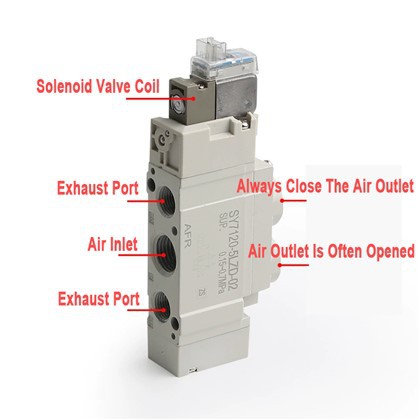Solenoids are used in many applications to provide linear or rotary drive in mechanical systems. Although the actuation of solenoid valves can be as simple as opening and closing current, they can achieve better performance by using a dedicated IC to drive them. In this paper, we will study how the drive circuit affects the electromechanical performance of the solenoid valve. Two different drive circuits will be compared: a simple switch and a current regulated driver. Energy saving technologies to limit solenoid power consumption will also be included. The basic knowledge of solenoid valve in the simplest form, the electromagnetic coil is the coil that generates magnetic field. What we usually call a solenoid is a device that uses a coil and a moving core made of iron or sometimes another magnetic material. The application of current to the coil causes the core to be pulled or pushed relative to the coil, resulting in movement of objects used to drive objects in mechanical systems.
1. A typical electromagnetic coil consists of a coil that produces a magnetic field. When the solenoid is activated, voltage is applied to the windings to produce a magnetic field. Because of the large inductance of the winding, it takes a period of time for the current to form. The force on the electromagnet core is proportional to the current. In order to produce the maximum force to move the core, a high voltage must be applied to the winding to quickly establish the current. Once the movement is complete, a much smaller current is usually used to hold the core in place. If the current does not decrease, a considerable amount of power is consumed in the winding and a lot of heat is generated by the solenoid. In order to solve these problems, a constant current driver can be used to drive the electromagnetic coil. The current can be controlled over time to provide the desired action and limit the power consumed to keep the solenoid in place. Test setup to compare the mechanical and electrical performance of different solenoid drive schemes, a simple test setup was constructed using a servo potentiometer connected to a flexible solenoid to measure the movement of the solenoid. Motion, as well as voltage and current, is captured using an oscilloscope.
2. The test device involves a servo potentiometer connected to a solenoid with a bend. The simplest way for a simple electromagnetic driver to drive a solenoid valve is to turn on and off the current. In this circuit, the current is only limited by the supply voltage and DC resistance of the electromagnetic coil.
3. The simplest way to drive the solenoid coil is the problem of switching current, which usually uses low-end MOSFET switch and current recycling diode. The electromechanical performance of simple drives is limited. Since all voltage and current are applied 100% of the time, the pull in current is limited by the continuous power consumption rating of the solenoid. The large inductance of the coil also limits the speed of the current increase when the coil is first started. In our test, we measured the movement, voltage and current of solenoid using simple switch. In this case, whenever the solenoid is activated, the solenoid (15 Ω, rated voltage 12 V) takes 30 ms to drive and consume 10 W of power.
4. These waveforms use simple switches to represent the movement, voltage and current of the solenoid. If you want to know the "Valley" in the current waveform, the decrease in current is due to the back EMF generated by the moving core of the electromagnet. As the core accelerates, the back EMF increases until the bottom of the solenoid appears and stops moving. In most applications, high-performance electromagnetic actuators only initially require full current to pull into the solenoid. After the movement is completed, the current level in the solenoid can be reduced, which can save energy and reduce the heat generated in the coil. This also allows the use of a higher supply voltage, which provides a higher pull-in current, allowing the solenoid to start faster and provide more force.






